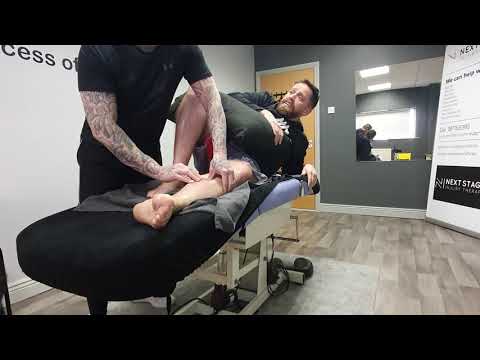What you need to know about complementary massages
While a massage for yourself may seem purely for pampering yourself, it's actually a very healthy and effective way to relieve stress and tension. It promotes relaxation and increases blood flow to the area. Massage can be used to relieve discomfort and treat injuries. It increases mobility and helps reduce swelling and stiffness in muscles. Here are some things to be aware of about complementary massages.

Structural integration is a cutting-edge method of massage. Practitioners employ a variety of techniques using the hands and soft tissue to manipulate the myofascial system of the body. This system is what surrounds muscles and gives them shape. Therapists who specialize in this method may employ slow, deep stretching movements to relieve tension. Therapists can also apply pressure to different areas of the body and ask clients to move whenever they apply pressure. The results of a structural integration session are lasting and highly beneficial.
Structural integration is an approach that involves hands-on treatment of soft tissue. Depending on the degree of certification, the patient may be seated or standing during the session. Although it is difficult to determine the level of experience required for professionals in this field, it is crucial to note that a graduate from a CBSI-certified institution has achieved the highest standards of competence in practice. According to the U.S. Bureau of Labor Statistics (USBol Statistics) the forecast predicts a 21 percent growth in massage-related jobs between 2029 and 2029. This is partly due the growing interest in natural healing and the aging of the population.
Another form of massage is to manipulate the body's myofascial systems. It focuses on the fascia, which is the muscle's protective layer and creates the body's shape. Practitioners can employ slow, deep stretching movements and constant pressure. They can instruct their clients to move while the practitioner applies pressure. The goal is to align the body and allow it to move freely. This massage is similar to a session of physical therapy however, there are some differences.
A typical structural integration session is composed of between ten and thirteen sessions that build upon each other. To achieve a healthy, balanced posture, the practitioner will use a variety methods. The fascia and muscles in the body are connected by an invisible ring. The whole structure is therefore inherently connected to the body's skeleton. Therefore, it is vital for your health to stay in good physical shape.
A typical structural integration session includes 10 to 13 sessions. Each session builds on the one before it. This massage uses the manual manipulation of pressure levels and manual manipulation to restore the body's structural strength. A practitioner may focus on different areas of the body to address various issues. Patients with a complex medical history might benefit from this treatment. A doctor can also recommend massage therapy that is suitable for those with a weak or injured back.
A typical structural integration session is comprised of 10 to 13 sessions. Each session builds upon the previous one and is focused on the same muscles. A practitioner will use the manual manipulation and pressure to balance and align the body's structures during the course of treatment. The body is divided into sections and layers. The practitioner will assess your posture and discuss your personal history to determine which area of your body requires attention. A structural integration session also includes training in movement to improve your movement habits.
Structure integration is a more intense form of massage than regular massages. It is a series of between 10 and 13 sessions, each one building on the last. It employs gentle Go to this site pressure to target the muscles in each layer and segment of the body. The structural integration professional will evaluate your work history and determine the right pressure to apply to the targeted areas. During the session, the client must be aware of whether they feel any pain. The practitioner will adjust to your unique body position if you are comfortable during treatment.
A typical structural integration session consists of between ten and thirteen sessions. Each session builds on the previous. This hands-on approach to soft tissues manipulation employs varying pressures and manual manipulation to enhance the structural strength. The body is divided into segments and layers. This kind of massage typically requires ten to thirteen sessions lasting between two and four hours per session. In addition, structural integration practitioners may incorporate movement education into their practice.